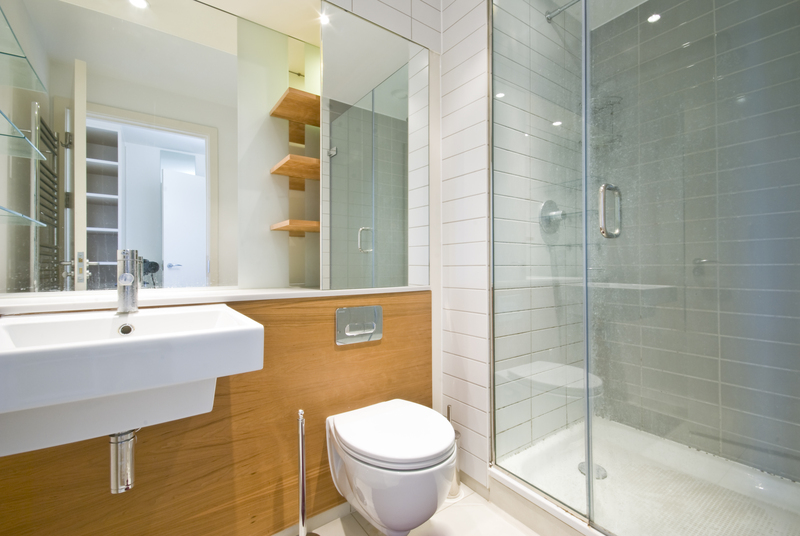Pro Guide to Cleaning Burnt-on Stovetop Residue
Are stubborn, burnt-on stains turning your stovetop into a source of frustration? Whether it's from an overboiled pot or a splatter fest during meal prep, residue can quickly build up. This professional guide to cleaning burnt-on stovetop residue arms you with effective, safe, and efficient strategies to restore your stovetop's shine. Read on for expert tips and step-by-step instructions to conquer even the most persistent messes.
Why is Burnt-on Stovetop Residue So Challenging?
Burnt-on residue forms when food, oils, and liquids are exposed to high heat and stick to your stove's surface. Over time, these stains carbonize and adhere deeply. They're not only unsightly but can impair your stove's performance and even become a fire hazard. Understanding the nature of stovetop residue is the first step toward effective cleaning.
- Residues are often a mix of sugars, proteins, and fats that polymerize under heat.
- Repeated exposure to heat hardens these spots, making them impervious to routine cleaning.
- Improper cleaning can scratch or damage your stovetop, especially if it's made of glass or ceramic.
In this comprehensive article, we'll cover every aspect of cleaning burnt-on residue and maintaining a spotless stovetop.

Essential Supplies for Cleaning Burnt-on Stovetop Residue
Before you tackle those tough stains, gather the right tools. Here's a list of essential cleaning supplies for burnt-on stovetops:
- Soft microfiber cloths
- Baking soda
- White vinegar
- Dish soap (preferably grease-cutting)
- Plastic or silicone scraper
- Non-abrasive sponges
- Spray bottle
- Razor blade (for glass stovetops only, use carefully!)
- Commercial stovetop cleaner (optional)
- Old toothbrush
- Rubber gloves
Step-by-Step Guide: How to Remove Burnt-on Stovetop Residue
1. Safety First: Prepare Your Stovetop
- Turn off burners and let the stovetop cool completely.
- Remove grates, burners, or removable elements.
- Unplug electric stoves or gas supply (if necessary for deep cleaning).
Working on a cool, safe surface prevents burns and ensures the cleaning agents work effectively.
2. Start with a Surface Wipe-down
- Use a damp microfiber cloth to remove superficial crumbs and grease.
- Mix a few drops of dish soap in warm water for more thorough degreasing.
- Rinse and repeat as necessary before tackling tough, burnt-on spots.
3. Loosen the Burnt Residue with Steam
- Fill the area with a towel soaked in hot water, letting it rest for 10 minutes.
- The steam will help soften the residue, making it easier to remove.
- Don't pour boiling water directly on glass or ceramic as thermal shock may crack the surface.
4. Apply a Baking Soda Paste
- Combine baking soda with a few tablespoons of water to create a thick paste.
- Spread the paste over burnt-on areas generously.
- Let it sit for 15-30 minutes to allow the gentle abrasives to break down the carbonized stains.
Baking soda is a natural, non-abrasive cleaner that lifts even the toughest residue without scratching surfaces.
5. Tackle Stubborn Spots with Vinegar
- Fill a spray bottle with white vinegar and spritz it over the baking soda paste.
- Allow the mixture to bubble and fizz, further loosening burnt residue.
- After 5 minutes, use a non-abrasive sponge to scrub the surface.
Vinegar's acetic acid breaks down grease and helps lift carbon, while the fizzing action with baking soda loosens tough deposits.
6. Scrape Gently for Persistent Burnt-on Marks
- Use a plastic or silicone scraper at a shallow angle to lift away loosened gunk.
- For glass stovetops, carefully use a razor blade, keeping it flat to avoid scratches.
- Never use steel wool or harsh scrubbers on glass or ceramic surfaces.
7. Final Wipe-down and Polish
- Wipe the entire stovetop with a clean, damp cloth, removing all residue and cleaner.
- Buff with a dry microfiber towel for a streak-free shine.
- Reassemble grates or burners only when completely dry.
Best Cleaning Methods for Different Stovetops
How to Clean Burnt-on Residue from a Glass Stovetop
- Utilize baking soda paste, followed by light scrubbing with a soft cloth.
- Carefully employ a flat razor blade for the most stubborn spots, keeping the blade parallel to the surface.
Avoid abrasive cleansers; always finish with a glass cleaner or vinegar spray for a stunning, streak-free finish.
How to Clean Burnt-on Stains from a Gas Stovetop
- Remove burners and grates. Soak these parts in hot, soapy water, then scrub with a brush or scouring pad.
- For the cooktop, use baking soda-vinegar methods as above.
- Inspect burner holes for clogs; use a pin to clear if needed.
*Ensure all components are fully dry to avoid ignition problems or rust before reassembling.*
Cleaning Burnt-on Residue from an Electric Coil Stovetop
- Unplug or switch off power first.
- Remove coils (if possible) and wipe with a damp cloth--never immerse in water.
- Clean drip pans and surface beneath with baking soda and vinegar.
*Take care not to damage electrical connections--follow the manufacturer's cleaning instructions whenever available.*
Natural Alternatives: Eco-Friendly Stovetop Cleaning Solutions
If you prefer green cleaning methods, you're in luck. These eco-friendly solutions cut through burnt-on messes just as effectively:
- Lemon Juice: Sliced lemons can be rubbed directly on stains. The citric acid breaks down grease and carbon.
- Salt and Vinegar: This gritty combo tackles stubborn stains and provides extra scrubbing power.
- Hydrogen Peroxide and Baking Soda: For especially tough marks, spread baking soda, spritz with hydrogen peroxide, and let fizz before wiping away.
*Be aware: natural cleaners still require proper rinsing to prevent residue build-up over time!*
Common Mistakes to Avoid When Cleaning Burnt-on Stovetop Residue
- Don't use abrasive scouring pads or steel wool on glass or ceramic surfaces.
- Avoid harsh chemicals like oven cleaner unless specified for stovetops.
- Do not reassemble wet burners, grates, or electric coils.
- Never scrape with metal knives, screwdrivers, or any tools not designed for stovetara.
- Don't ignore small stains--regular cleaning prevents build-up and makes your job easier.
Pro Tips for Maintaining a Spotless Stovetop
- Wipe up spills immediately after cooking (once safe and cool).
- Make weekly cleaning a routine using mild dish soap and water.
- Use burner liners or drip pans to catch spills on gas and electric stoves.
- Schedule monthly deep cleaning to stay ahead of burnt-on messes.
- Keep commercial stovetop cleaner on hand for quick touch-ups.
Frequently Asked Questions About Burnt-on Stove Residue
What's the best stovetop cleaner for burnt-on residue?
While baking soda and vinegar are excellent natural choices, many commercial stovetop cleaners (like Cerama Bryte for glass or Bar Keepers Friend for all surfaces) provide effective results with minimal effort. Ensure the product matches your stovetop type.
Can you use a razor blade on a glass cooktop?
Yes, but use extreme caution. Always keep the blade at a shallow angle and avoid gouging the surface. A dedicated scraper tool with a comfortable handle is best.
How often should you clean burnt-on stovetop residue?
Clean spills right away to prevent burning. For regular home cooks, a deeper clean every week or two keeps residue from building up and becoming unmanageable.
Is burnt-on residue dangerous?
Persistent burnt residue can smoke, smell bad, or even pose a fire hazard. Regular cleaning also reduces the risk of food cross-contamination.

Professional-Grade Solutions & When to Call for Help
If stains go beyond your cleaning efforts or cover a large area, professional appliance cleaning services have commercial-grade solvents and tools to restore stovetops without risk. For severely discolored glass or deep, long-standing carbon deposits, contacting a professional may be the safest, quickest option.
Conclusion: Shine On with a Spotless, Safe Stovetop
Burnt-on stovetop residue doesn't have to be permanent. With the right approach, safe cleaning solutions, and gentle tools, your kitchen centerpiece can sparkle again. Regular maintenance, immediate spill response, and the pro cleaning methods outlined above ensure you'll spend less time scrubbing and more time cooking (and enjoying) delicious meals.
Keep this pro guide to cleaning burnt-on stovetop residue handy and embrace a cleaner, safer kitchen every day.
- Deal with burnt-on stovetop stains the professional way
- Use a combination of natural and commercial cleaners
- Always prioritize your stovetop's surface and manufacturer's recommendations
For more detailed home care and cleaning advice, subscribe to our newsletter or explore additional articles on kitchen maintenance!


